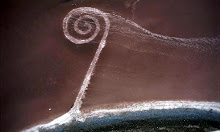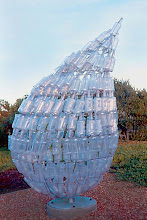Today's in-class discussion of Fried's Why Photography Matters began with a focus on the work of French photographer Roland Barthes. Barthes exhibits concepts known as punctum and studium. The latter refers simply to the content of a photo, while the former focuses more on the effect a photo has. Being a belletrist, i.e. one who places importance on aesthetics, Barthe often muses on his photos with an air of intuition, rather than education. Indeed, many true works of art, or photography, possess a certain "greatness" that is often unable to be truly explained. Stemming from the works of Barthe, and the aforementioned concepts, the discussion shifted to the ideas of aesthetics in photography, named grace and composure. Many photos, while appearing to come off as natural, may in reality be quite contrived. Several photos were shown, with many proving to be quite revealing in their intentions. As the topic of grace was brought up, a specific importance to the human body seemed to arise. The idea of grace, or gracefulness, generally refers to a certain elegance and relative ease with which a body (or object) interacts with its environment. Similarly, the concept of composure highlights a certain harmony between the movements of the body, in relation to the surroundings as well.
As the discussion of grace and composure moved forward, the idea that came first into my head was that of an athlete on his/her competitive field. To witness such a great physical specimen display such unique and awe-inspiring body control, as well as control over, say, a ball, is perhaps one of the truest forms of grace. This spark of inspiration, combined with the dovetailing concepts aforementioned got me thinking of how they might be essential to the idea of site-specific art. Indeed, one of the basic underlying concepts of site-specific art is the piece's relationship with its environment, or, one might argue, the grace with which it exists harmoniously with all aspects of its habitat. To combine the world of athletics with that of site-specific art is no easy task, however I was able to find an excellent example in the form of the iconic Michael Jordan. Playing with the Chicago Bulls for his entire career, MJ won 6 NBA championships and set innumerable records en route to becoming the greatest basketball player of all time. To pay homage, the City of Chicago erected a bronze statue of His Airness outside of the United Center, where the Bulls play their home games. Displaying Jordan flying through the air, in the same pose seen on the Air Jordan line of Nike products, the statue is a truly graceful representation of a player who played the game of basketball more beautifully than perhaps anyone in history. The fact that it stands tall on the outskirts of the arena, in the heart of the city in which Jordan forged his legacy, makes it a truly site-specific work, as well as an aesthetic and masterful representation of the high-flying sport of basketball.










No comments:
Post a Comment